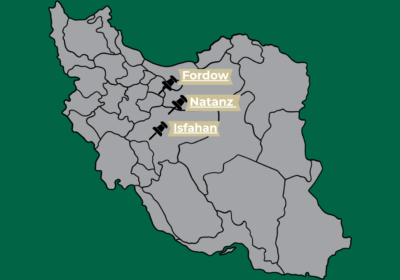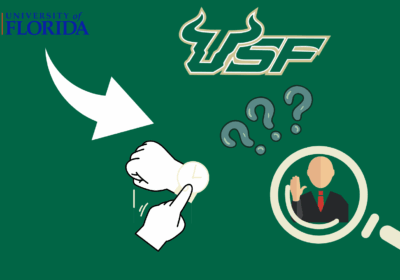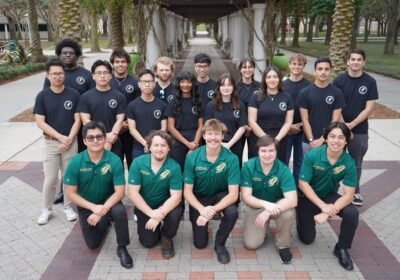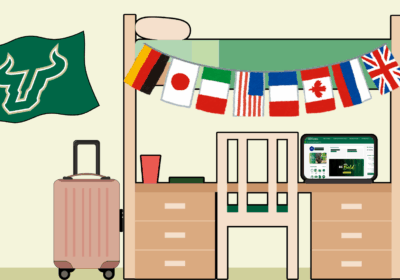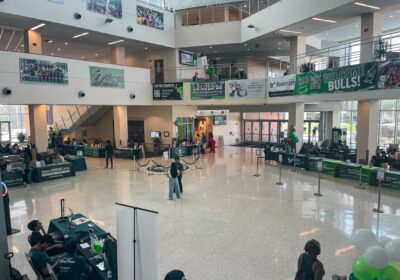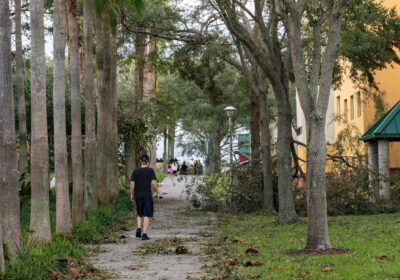Here is a breakdown of USF’s undergrad tuition fees

For some students, such as Corinne Mac, it can be hard to understand what their tuition fees cover.
“It gets to a point where you don’t really know what you’re paying for,” said Mac, a freshman accounting major.
For this academic year, USF undergraduate students pay $211.19 per credit hour. Out-of-state students pay an additional $363.82 fee.
Besides tuition, students pay other fees that fund university services and buildings, such as the Marshall Student Center (MSC) and the Bull Runner. These fees are divided into state, local and others.
Mac said reading through the student bill is “confusing.”
“It’s very hard to tell what you’re paying,” Mac said. “More clarity on them would be nice.”
Here is what is included in undergraduate students’ tuition.
State fees
The state fees include tuition as well as the capital improvement trust fund (CITF) fee and the financial aid fee.
The CITF fee helps pay for new campus infrastructure at USF, such as Library renovations and improvements to the MSC. The state collects the fee and distributes it to universities based on construction needs, said USF spokesperson Ryan Hughes.
Over $6.3 million from CITF fees collected in the 2024-25 year will be used for the construction of USF’s on-campus football stadium.
The financial aid fee is collected to provide need-based financial aid to other students, according to the State University System of Florida.
Local fees
Local fees include the activities and services fee (A&S), athletics fee and student health fee.
The student health fee supports the Student Health & Wellness Center. It helps keep charges for general consultations and specialty care affordable, Hughes said.
It also provides access to the Counseling Center, Center for Student Well-Being and the Center for Victim Advocacy and Violence Prevention.
The athletics fee allows students to receive complimentary tickets to athletics events.
The A&S fee for the Tampa campus funds 12 student success departments, including The Oracle, and over 250 student organizations, according to Student Government (SG).
Ava Moreno, SG Tampa governor, said USF collects about $13.9 million annually in A&S fees.
For the 2024-25 fiscal year, student organizations received around $1.3 million and student programs and services got around $13.5 million.
Some departments being funded are the Center for Leadership & Civic Engagement and Recreation and Wellness (REC).
Other fees
“Other fees” include transportation, student union, technology and green energy fees.
Angelina Manzano, a freshman psychology major, said she didn’t understand why she was being charged a transportation fee.
On the Tampa campus, the transportation fee is mainly used to pay for the Bull Runnerservice, which provides bus transportation around campus, Hughes said.
“I’ve never used the Bull Runner, so why am I being charged for something I’ve never used?’” Manzano said.
Related: USF parking has cashed in over $25M in permit sales since 2021
The fee can also be used to fund parking lots and garage maintenance and “supplement the revenues” from permit sales and citations, Hughes said.
The student union fee contributes to the maintenance and improvement of the MSC and debt service on the building, Hughes said.
The technology fee supports USF’s technology services, which include updating computers in student labs, Hughes said.
Affordability
Despite having trouble navigating her bill, accounting major Mac said USF is “affordable.”
For this academic year, USF’s estimated in-state tuition and fees are $6,410, compared to $5,604 at Florida State University (FSU) and $6,368 at the University of Central Florida.
As for out-of-state students, USF’s estimated tuition and fees are $17,324, compared to $18,749 at FSU and $22,467 at UCF.
Florida also has the lowest undergraduate tuition and fees in the country for the 2024-25 academic year, according to a Board of Governors report.
Regardless of the cost, Mac said she is satisfied with the resources USF provides to students.
“There’s free tutoring services and resources like therapy, which is really nice,” Mac said. “There’s always plenty of things to do and plenty of people to help you.”


